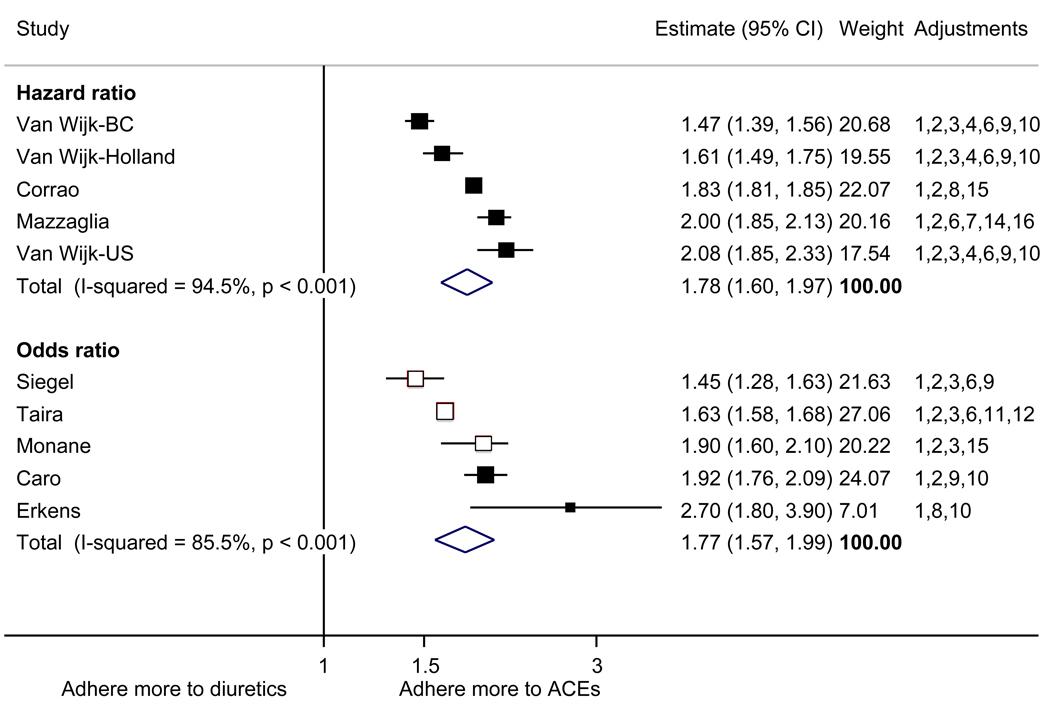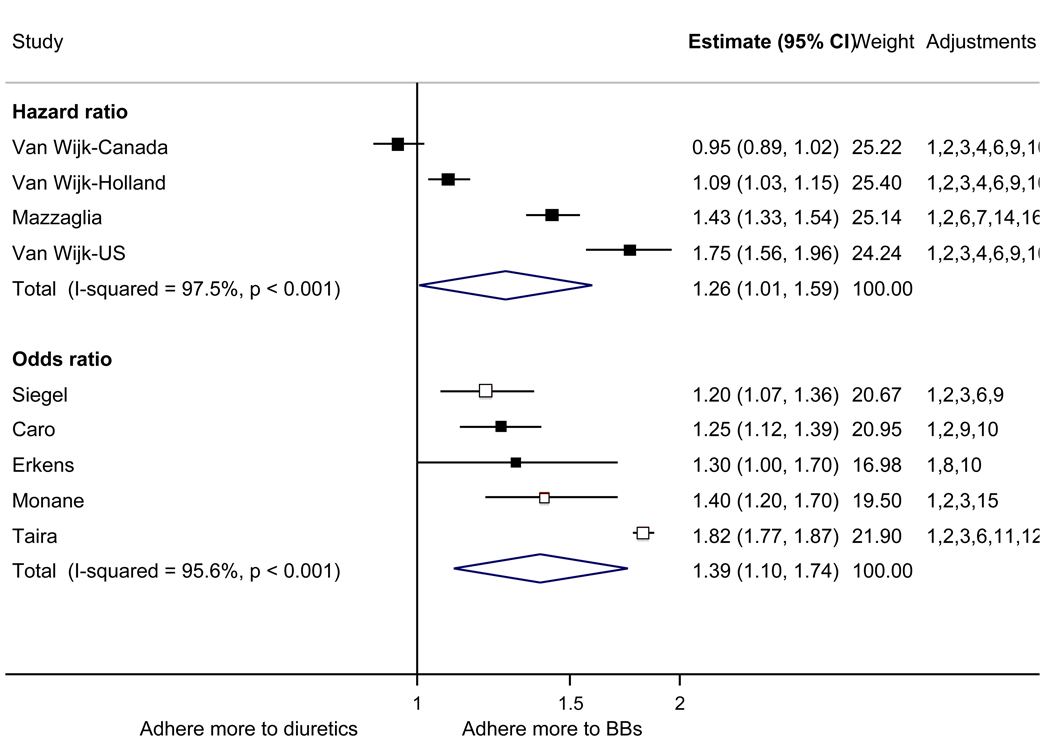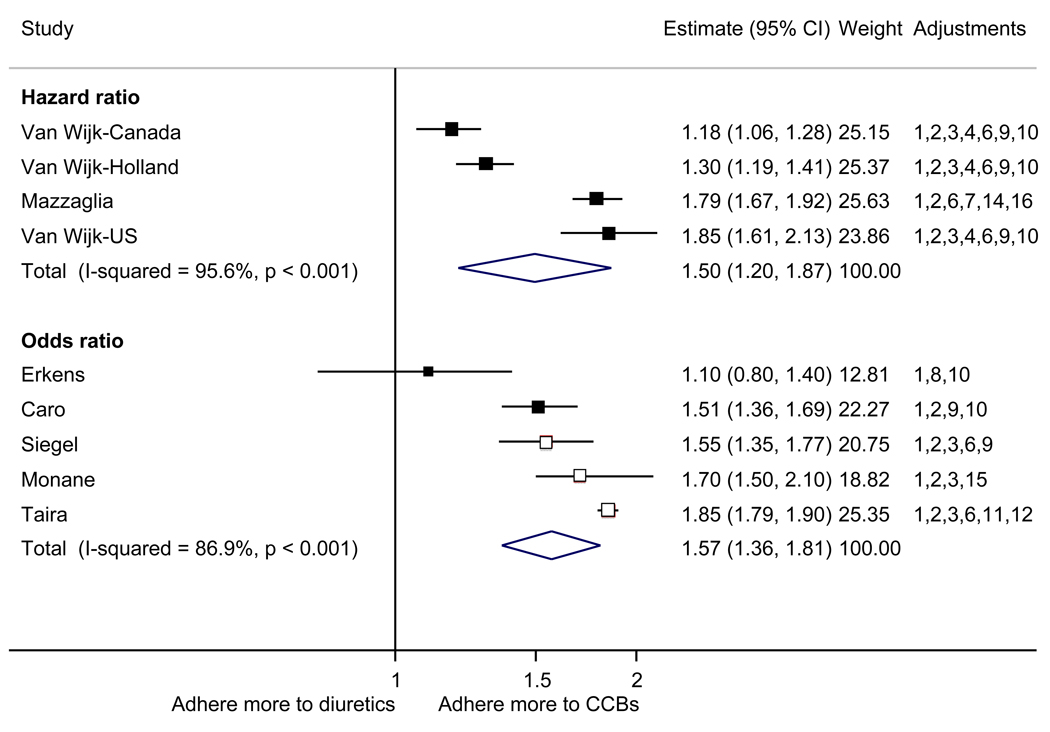Figure 3.
Adherence to diuretics compared to other antihypertensive drug classes: meta-analysis results. Hazard ratios and odds ratios with 95% confidence intervals on a logarithmic scale for individual or pooled study data for each pair-wise comparison for relative risk of adherence between pairs of classes of blood pressure medication. Black boxes refer to studies in which adherence is measured as persistence; red boxes refer to studies in which adherence is measured as compliance.
Adjustments: (1) age, (2) sex, (3) race/ethnicity, (4) income or receipt of social assistance, (5) residence, (6) comorbidity types, (7) comorbidity burden, (8) treatment with medication classes other than antihypertensives, (9) medication regimen characteristics (number of medications, frequency of dosing, number of pills per day), (10) health care utilization (prior hospitalizations, physician visits, use of other services), (11) out-of-pocket medication costs, (12) type of health insurance, (13) physician characteristics, (14) blood pressure at baseline, (15) year of first prescription, (16) family history of comorbidities
Abbreviations: ARB, angiotensin receptor blocker; ACEI, angiotensin-converting enzyme inhibitor; BB, beta-blocker; CCB, calcium-channel blocker; CI, confidence interval



